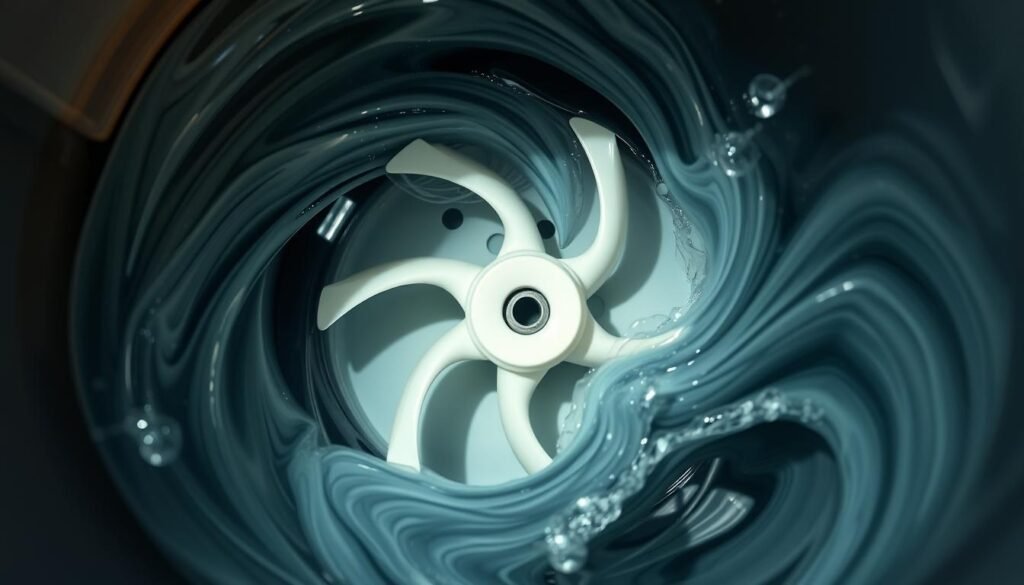Water pumps are essential tools in agriculture, construction, and various industries. At the heart of these systems lies the 葉輪, a critical component that drives water flow. The impeller converts fuel into kinetic energy, creating the pressure needed to move water efficiently.
When the impeller functions properly, the pump operates smoothly, ensuring consistent water flow. 然而, inefficiencies in this component can lead to reduced performance. Signs of a failing impeller include irregular water flow or engine strain.
Over time, wear and tear can affect the impeller’s condition. Regular maintenance helps identify issues early, preventing costly repairs. This article will guide you through recognizing signs of a working impeller and maintaining your water pump system effectively.
Understanding the Role of the Impeller in Water Pumps
The impeller is a vital part of any water pump system, ensuring efficient water movement. This component transforms fuel into kinetic energy, which powers the pump. Without it, the pump would fail to generate the necessary flow and pressure.
How the Impeller Converts Fuel into Kinetic Energy
The engine drives the impeller, creating rotary motion. This motion converts fuel into energy, which is then used to move water. The process generates suction and thrust, enabling the pump to discharge water effectively.
例如, Honda water pumps rely on well-designed impellers to maintain high performance. The size and shape of the impeller are crucial for optimal operation. A properly functioning impeller ensures the pump works efficiently, even under heavy loads.
The Impeller’s Contribution to Water Flow and Pressure
The impeller’s design directly influences water flow and pressure. Its curved blades create a centrifugal force, pushing water outward. This action increases pressure, allowing the pump to move water over long distances.
In a water pump system, the impeller acts as the heart. It ensures consistent flow, preventing blockages and disruptions. Regular maintenance of this component is essential to avoid performance issues and costly repairs.
How do you know if impeller is working
The performance of a water pump heavily relies on the condition of its impeller. This component plays a critical role in generating suction and thrust, which are essential for efficient water movement. Over time, wear and tear can compromise its functionality, leading to noticeable performance issues.

Identifying Signs of Damaged Suction Power and Thrust
One of the first signs of a failing impeller is reduced suction power. When the pump struggles to draw water, it indicates that the impeller may be worn or damaged. This issue often results in decreased thrust, affecting the pump’s ability to move water efficiently.
Common indicators include:
- Difficulty in priming the pump.
- Inconsistent water flow despite a running engine.
- Unusual noises from the pump system.
Recognizing Wear and Uneven Surfaces on the Impeller
Visible wear on the impeller’s surface is another clear sign of trouble. Over time, the blades may develop cracks, chips, or uneven edges. These imperfections hinder the impeller’s ability to convert kinetic energy effectively.
During inspection, look for:
- Erosion or pitting on the blades.
- Changes in the component’s size or shape.
- Uneven surfaces that disrupt water flow.
Observing Reduced Water Discharge and Flow Blockages
A decrease in water discharge is a strong indicator of impeller problems. Blockages or reduced flow often result from debris accumulation or damage to the impeller. This issue can also strain the engine, leading to further complications.
Key symptoms include:
- Lower water pressure than usual.
- Frequent blockages in the pump system.
- Engine overheating due to increased workload.
Regularly inspecting the impeller helps identify these issues early, ensuring the pump operates at peak efficiency.
Troubleshooting and Maintenance Tips for Your Pump System
Maintaining a water pump system requires attention to its key components, especially the impeller. Proper care ensures the pump operates efficiently and avoids unexpected breakdowns. Regular inspections and timely repairs can save time and money in the long run.
Step-by-Step Methods to Test Impeller Performance
To test the impeller’s performance, start by turning off the pump and disconnecting it from the power source. Carefully dismantle the pump housing to access the impeller. Inspect the blades for signs of wear, 裂縫, or uneven surfaces.
下一個, check for blockages in the pump housing. Debris can disrupt water flow and strain the engine. Reassemble the pump and test its operation. If the water flow is inconsistent or weak, the impeller may need replacement.
Preventative Care and Repair Recommendations
Regular cleaning is essential to keep the impeller and pump system in good condition. Remove any debris from the housing and inspect the impeller for damage. Replace worn-out parts, such as bearings, to maintain optimal performance.
Use high-quality replacement parts to ensure durability. “Investing in quality components can prevent recurring problems over time,” advises a pump maintenance expert. Proper care extends the lifespan of your water pump and ensures reliable operation.
結論
這 葉輪 is a critical component in any water pump 系統, driving efficient water flow and pressure. Recognizing signs of malfunction, such as reduced suction or uneven surfaces, helps address issues early. Regular inspection and maintenance ensure the 泵 operates smoothly, preventing costly repairs.
Proper care of the 葉輪 directly impacts the engine’s performance and overall 系統 效率. By understanding these signs, users can diagnose problems quickly and maintain optimal water flow. Following troubleshooting tips and investing in quality replacement parts extends the pump’s lifespan.
Timely maintenance not only saves time but also ensures consistent performance. Prioritize regular checks and proactive care to keep your water pump system running effectively for years to come.
